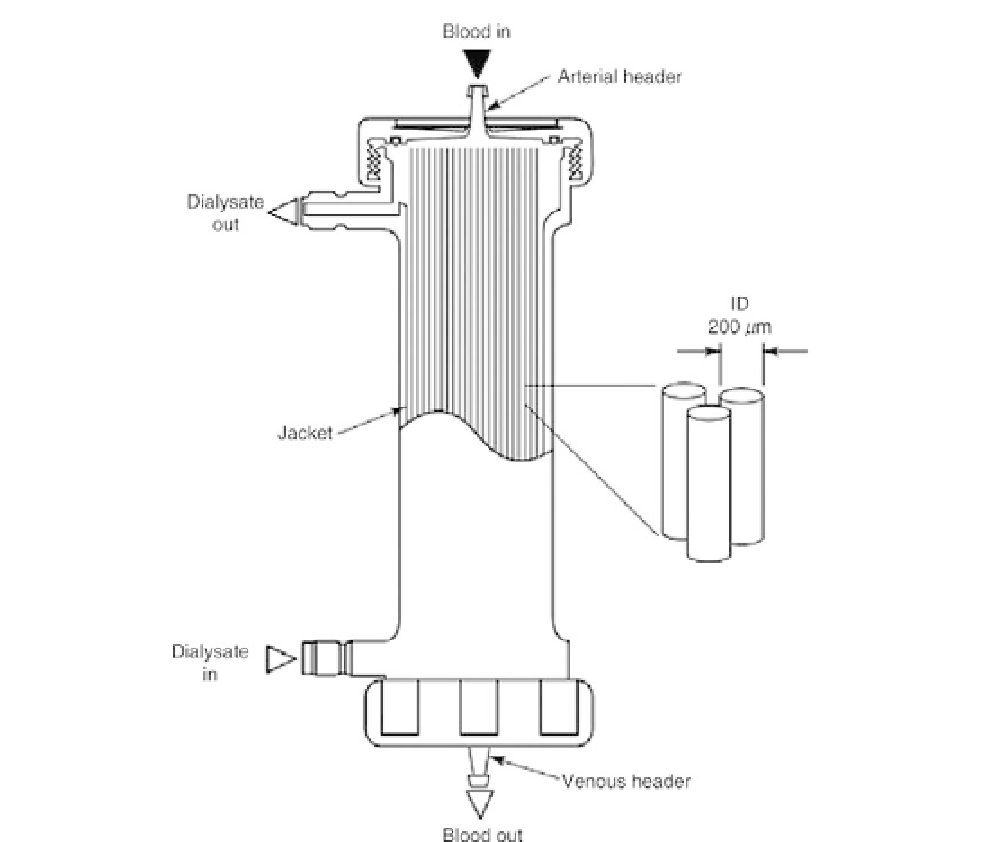Biomedical Engineering Reference
In-Depth Information
FIGURE 14.22
Dialyzer cartridge depicting blood and dialysate pathways.
concentration of wastes, and dialysate is waste free. Blood has a high concentration of ions,
and dialysate has a normal concentration (Figure 14.23).
The solubility of diffused substances within the capillary tube pore (labeled membrane
in Figure 14.23) is different from that of the freely moving substances within blood and/
or dialysate. Thus, there is a discontinuity in the concentration of substances within the
membrane, which is noted by a membrane distribution coefficient. Note that the diffusion
is from high concentration within the blood toward the lower concentration within the
dialysate. There is also a free flow zone for both blood and dialysate (where the concentra-
tion is flat, indicating no mass transfer), as well as a boundary layer near the wall of the
capillary tube (where the concentrations are now altered due to mass transfer). The bound-
ary layer produces slower axial flow rates and allows for the radial mass transfer to pro-
ceed. The slower flow rates near the wall of the capillary tube within the boundary layer
are due to shearing forces within flowing blood. This will be described in the subsequent

